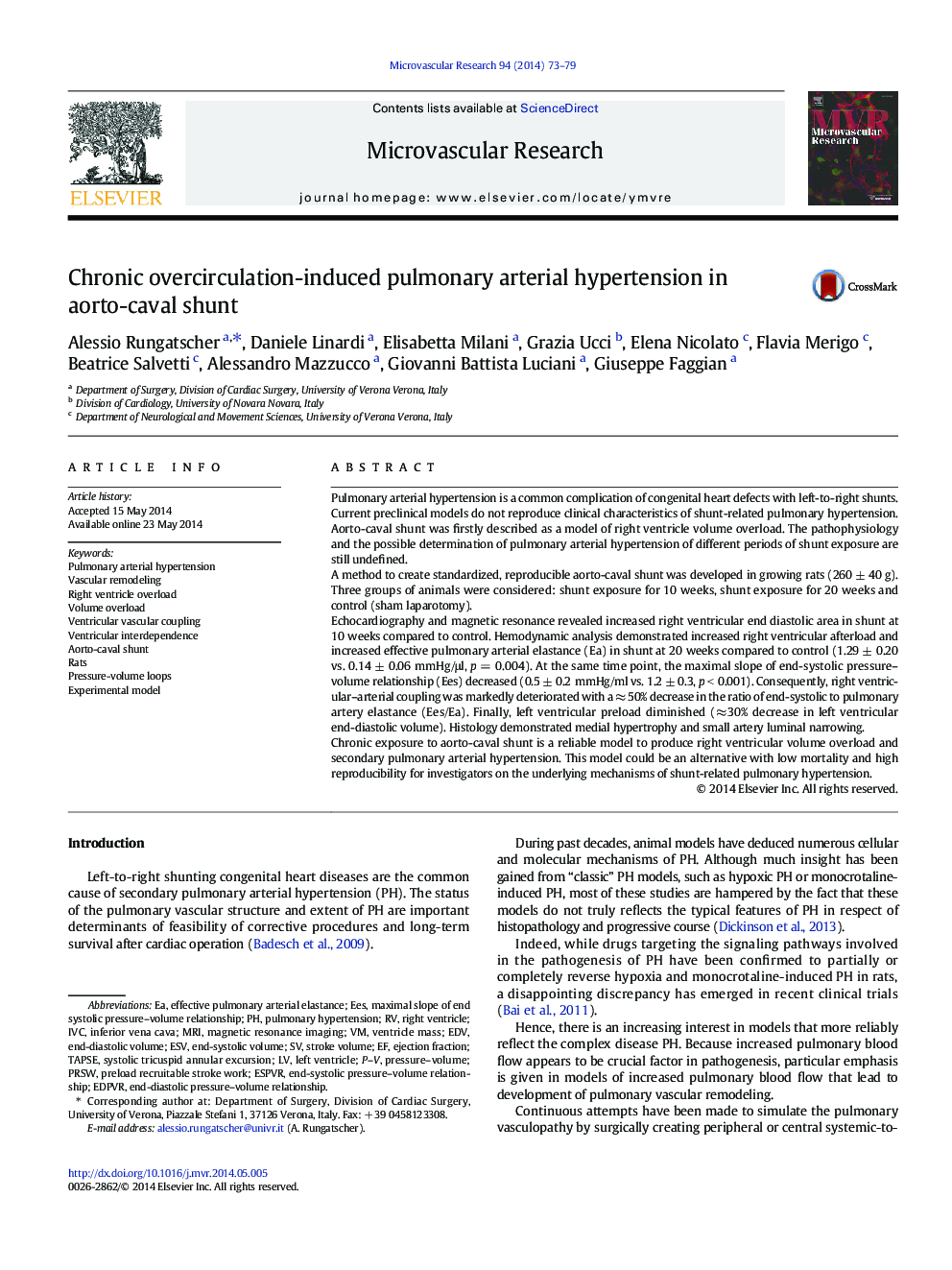| کد مقاله | کد نشریه | سال انتشار | مقاله انگلیسی | نسخه تمام متن |
|---|---|---|---|---|
| 1994776 | 1541290 | 2014 | 7 صفحه PDF | دانلود رایگان |

• Aorto-caval shunt and right ventricle volume overload is performed in rats.
• Model was studied with MRI, echocardiography, pressure volume analysis and histology.
• Right ventricle–pulmonary artery uncoupling and pulmonary hypertension are demonstrated.
• Time and interventricular interdependence are fundamental to develop pulmonary hypertension.
Pulmonary arterial hypertension is a common complication of congenital heart defects with left-to-right shunts. Current preclinical models do not reproduce clinical characteristics of shunt-related pulmonary hypertension. Aorto-caval shunt was firstly described as a model of right ventricle volume overload. The pathophysiology and the possible determination of pulmonary arterial hypertension of different periods of shunt exposure are still undefined.A method to create standardized, reproducible aorto-caval shunt was developed in growing rats (260 ± 40 g). Three groups of animals were considered: shunt exposure for 10 weeks, shunt exposure for 20 weeks and control (sham laparotomy).Echocardiography and magnetic resonance revealed increased right ventricular end diastolic area in shunt at 10 weeks compared to control. Hemodynamic analysis demonstrated increased right ventricular afterload and increased effective pulmonary arterial elastance (Ea) in shunt at 20 weeks compared to control (1.29 ± 0.20 vs. 0.14 ± 0.06 mmHg/μl, p = 0.004). At the same time point, the maximal slope of end-systolic pressure–volume relationship (Ees) decreased (0.5 ± 0.2 mmHg/ml vs. 1.2 ± 0.3, p < 0.001). Consequently, right ventricular–arterial coupling was markedly deteriorated with a ≈ 50% decrease in the ratio of end-systolic to pulmonary artery elastance (Ees/Ea). Finally, left ventricular preload diminished (≈ 30% decrease in left ventricular end-diastolic volume). Histology demonstrated medial hypertrophy and small artery luminal narrowing.Chronic exposure to aorto-caval shunt is a reliable model to produce right ventricular volume overload and secondary pulmonary arterial hypertension. This model could be an alternative with low mortality and high reproducibility for investigators on the underlying mechanisms of shunt-related pulmonary hypertension.
Journal: Microvascular Research - Volume 94, July 2014, Pages 73–79